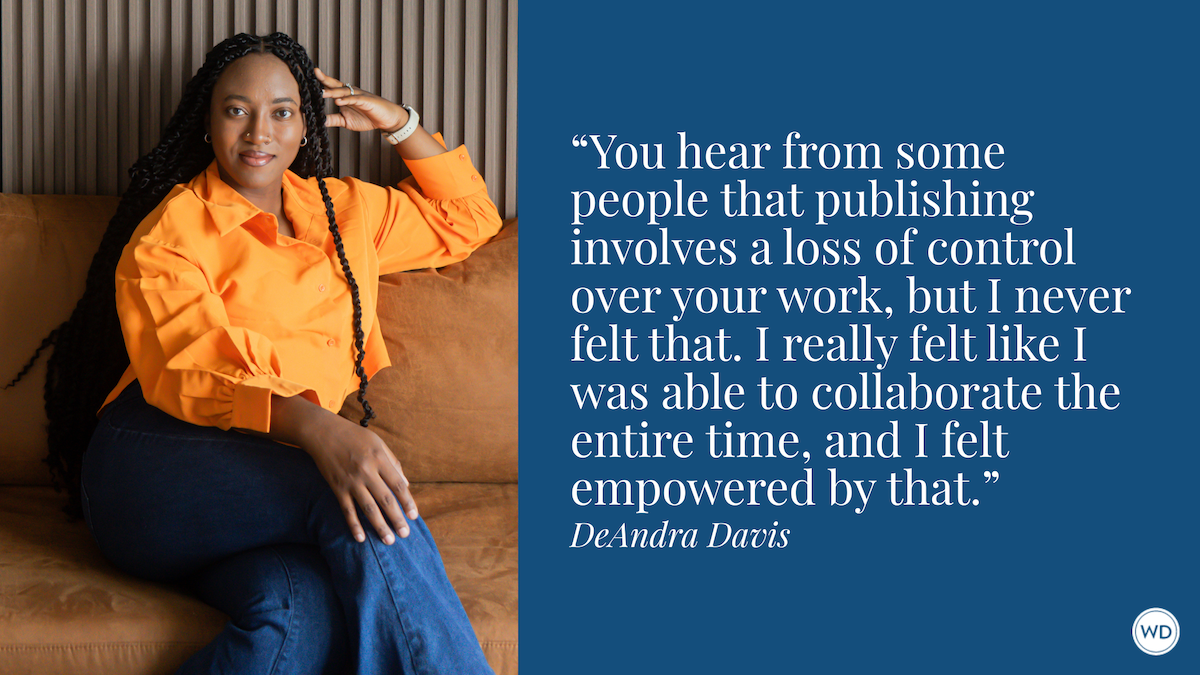7 Serious Tips for Writing a Humor-Filled Novel
Writing humor can be tricky. Use these tips to humor writing in your novel to make your readers laugh so hard milk squirts out their noses.
When you’re reading a book filled with humor writing that makes the milk you’re drinking squirt out your nose, like The Hitchhikers Guide to the Galaxy by Douglas Adams, the tone and the jokes often feel as natural and effortless as laughter. Right after wondering why the book didn’t come with a warning label about drinking milk while reading, you might even imagine that writing comedic material is easy. The truth is that writing great, silly fiction is hard, but it’s a skill you can hone if you’re willing to put in the same kind of effort you’d put into writing great serious fiction. So here are seven serious tips for writing a silly novel.
1. Know your genre well enough to play with it.
The genre of your story can be a rich source of humor writing. Knowing your category will give you endless material to parody and poke fun at. Start by making a list of the conventions, clichés, and tropes of your genre so that you can choose which ones to turn on their heads in your story. You can even find readymade lists of clichés on the submission guidelines pages of magazines and publishers where they note things they don’t want to see ever again. For example, the sci-fi and fantasy magazine Clarksworld has a list here that includes talking cats and swords.
2. Surprise your audience.
I am always surprised to find people who are surprised that surprise is the essence of comedy. That’s what a punchline is, a surprise. Surprises can be as simple as an unexpected end to a scene, an action, or even a sentence. Think of the Cave of Caerbannog sequence in Monty Python and the Holy Grail. The first surprise is that the deadly beast guarding the cave is just an apparently harmless rabbit, but the bigger surprise is when the bunny savagely kills Sir Bors. Surprises can also be as complex as a major plot twist that changes the entire story. Think about the end of Monty Python and the Holy Grail.
3. Use layers of humor to appeal to a wider fan base in your humor writing.
I’m not suggesting you use humor to appeal to wide people, only that particular kinds of comedy appeal to different people and age groups, so be sure to layer your laughs in multiple ways. Concrete physical humor like slapstick, crazy action, and absurdity will amuse almost anyone—including the youngest kids. Slightly more abstract humor including wordplay, farce, punning, and other jokes start to appeal to kids around 8-12 years old. Sarcasm, irony, parody, and innuendo kick in for audiences around 12-15. After 15, pretty much anything goes, allowing you to set up more complex humor writing like elaborate running gags, self-reflexive jokes, running gags, self-reflexive jokes, or even running gags.
4. Use conflict.
Conflict is the engine that makes every story go, even the funny ones, so build your central character around exaggerated, absurd, or obtuse struggles. Chase your character up a tree and then set that tree on fire. Use all three of the key sources of conflict—character versus character, character versus environment, and character versus itself—as opportunities for humor. Remember that of these three, the character versus itself is the most emotionally engaging. Audiences relate when they see a character pulled in opposite directions by forces everyone experiences. Safety versus freedom is an internal struggle we can all understand because we all want to feel safe but also want to feel free. Take a universal internal conflict like that and amplify it to comic proportions, or make your character ridiculously biased toward one side of the struggle, or split the struggle between two main characters who take their sides to silly extremes.
IndieBound | Amazon
[WD uses affiliate links.]
5. Think the details through thoroughly.
Your novel should contain outrageous, absurd, non-sequitur ideas and jokes, but it shouldn’t be a joke. It has to have its own consistent logic and laws to make it feel real. Your audience has to be able to take it seriously enough to get swept up and want to follow along. Unlike a silly movie or TV show, reading requires a good bit of work from your audience, so you have to put a good bit of work into it. If you’re writing a fantasy, think through the details of how magic works, the history of the world you’ve created, and how the various races of elves, men, goblins, or armadillos, relate to each other. Then make that stuff funny. For example, much of the humor of the hilarious Complete Enchanter series by L. Sprague De Camp is built on the characters bumbling their way through the logic underlying the magical systems of various myths, legends, and fictional worlds.
6. It’s not enough to be funny, you have to be meaningfully funny.
Even the best one-line jokes are memorable because they seem to suggest a deeper meaning. Meaning is what makes stories feel relevant and valuable rather than just entertaining, so give some serious thought to what you are trying to say with your silly novel. It can lend a lot of clarity to your work to think about how you would describe its meaning if you had to reduce it to a single sentence. Many comedy stories are powerfully affecting because they are more than just hilarious. The Princess Bride by S. Morgenstern (William Goldman) which revisits that old gem, “Love conquers all,” and the fourth Discworld novel Mort that reminds us, “Don’t fear the reaper.” Terry Pratchett once said that Mort was the first Discworld novel he really liked because in the earlier books the plot was just there to support the jokes, whereas in Mort, the jokes were there to support the plot.
7. Write to make yourself laugh (but then have other people check your work).
Comedy is a subjective thing. There’s no formula for what’s funny and no surefire way to predict what will make people laugh. Consequently, the best you can do is write stuff that amuses you. Of course, after you’ve written it, you should definitely check to make sure other people find it funny. Test your material on anyone willing to read it, and make sure that at least a couple of those folks are not your dear friends who will lie to you because they love you. Use the feedback you get to tighten your jokes, reinforce what’s working and eliminate what isn’t. No matter how funny you find something, if other people don’t laugh, it’s probably got to go. Weeding out superfluous jokes and comic bits to leave only the best can be painful, but when you’re done, you might just find yourself with a novel that requires a warning label advising people not to drink milk while they read.
Learn better by seeing examples? Check out Writer's Digest Tutorials,
helpful videos designed to help you reach your writing goals.
Enjoy this FREE preview and visit Writer's Digest Tutorials to learn more.
Jim Hardison has worked as a writer, screenwriter, animator, and director in entertainment and commercials since graduating from Columbia College of Chicago in 1988. He is the author of The Helm, which YALSA praised as one of 2010’s best graphic novels for young readers. He co-founded Character, LLC in 2000 and has given story advice to many of the world's largest brands, such as Target, Verizon, Samsung, McDonald's, and Walmart, and has even appeared on NBC's "The Apprentice" as an expert adviser on brand characters. Hardison lives in Portland, Oregon with his wife, two kids, and two dogs. Fish Wielder is his first novel.








